CREST13 Peace Garden Community Resource Center

English | Español
CREST13 Resource Center Report - On Cob Construction
One of the things that is important to recognise about the passage beyond the threshold of 2012 is that now is the time to articulate living the vision that was kindled. 2013 is 1320. Throughout 2012 it became clearer to me that I had nothing to lose but precious time if I remained keyed to the 12:60 wall for much longer. Fortunately, as the careful planning of realising the vision I had kindled for many years living as close to 13:20 as possible, I was offered an opportunity in Natural House building. Suddenly, a vision to create and co-create a thoroughly viable and inspiring 13:20 way of living, became a living reality in the making.
I was invited by my good friends Ishram, Overtone Hand and Ashani, Rhythmic Earth onto their land at the CREST13 Resource Centre in the central Highlands of Victoria, to live and work there and begin the journey of creating, designing and making a Natural Cob House.
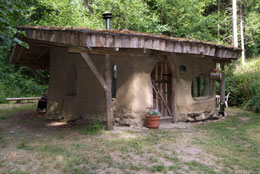

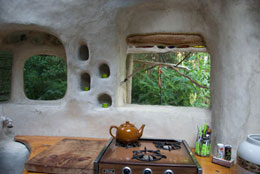
Cob is the generic term for the mass with which the walls are composed. The method of making Cob involves making a recipe of the correct composition of the elements of Sand, Soil, Clay (with clay slip), and Straw. Sticks and small stones are also sometimes added. A consistency is achieved in the mix, much like a loaf of dough, hence the term for bread, "Cob loaf". These loaves of cob are set down and layered in courses upon a stem wall. The stem wall consists of mortared or dry stone rocks of various sizes, built from below ground level up, to the width the wall is going to be. The stem wall is constructed upon a drain bed of coarse gravel, and layers of rock, rising up as the foundations to meet the ground level. When the stem wall rises to desired height, the Cob loaves are laid on the top of the stem wall and layered in courses. Each successive course is knitted in upon the course below it with a blunt object so that as the layers set, they harden and dry as one. Windows and door frames are set into the cob as you go and have lintels above them in order to support the wall that is built above them. The shear strength and load bearing capacity of a cob wall, if done properly, is unmatched.
The roof is constructed either before or after the walls go up, although doing the roof first of all is considered a much simpler and user friendly way of building. Roof design is tricky because here one encounters engineering issues and load tolerance of beams etc. More on the roof later.
The philosophy behind making an abode from the ground up using natural materials is very 13:20. It is said that anyone can build a cob house given the right planning, because they have been around for so long everyone remembers actually doing so in a past life. Great in theory but the real test comes when setting about to gather the materials, prepare them, season the wood and do the hard work of bringing the planning to life.
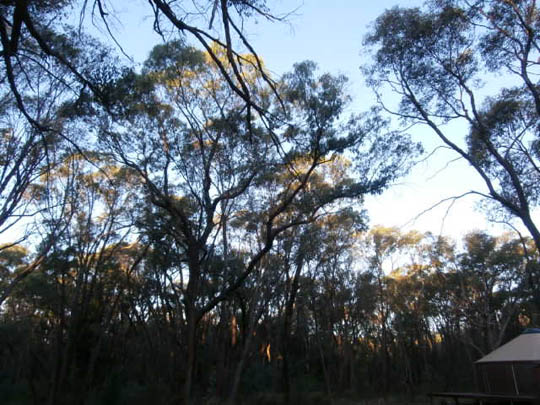
One of the appealing things about building with Cob is that it is possible to build from materials sourced either on site or nearby. Fortunately the CREST13 Resource Centre is thickly forested with many fallen or falling trees, such as Yellow Box eucalyptus and blow-ins in the shape of Plantation Pine. Rocks are a plenty as well as many white quartz stones. The land was once the site for an extensive Gold mine, and left over mining pits, some up to 2 metres deep pock the landscape.
With the background of such a tranquil setting, there are so many things to consider, so many things to think about and everything has to work as one for the whole project to succeed.
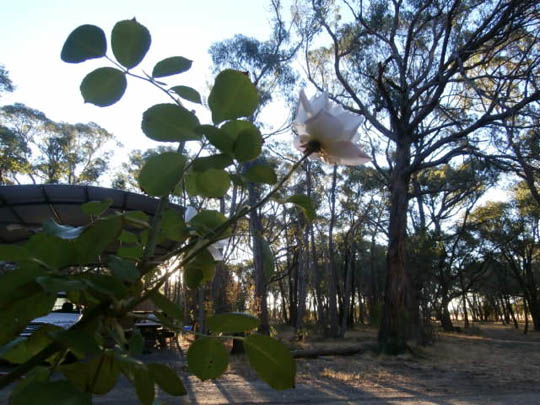

At the moment the whole project is still in its infancy. Everyday I work upon the multifarious tasks of planning a structure that will stand the test of time. For the time being I am gathering materials and site dreaming. The next stage will be to choose a site and begin the task of refining plans to the point where we can begin to dig the foundations, and lay drainage. I never thought I could be so excited at the possibility of laying drainage, but there you have it. I can't wait.

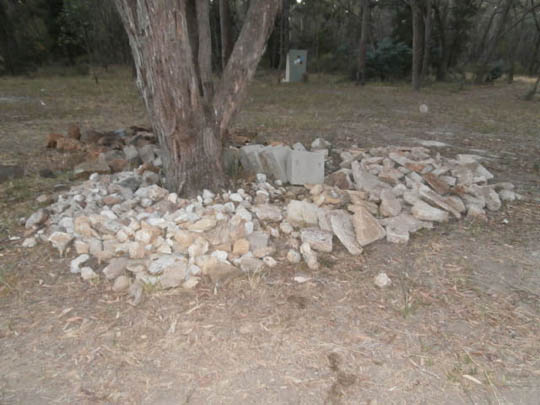
I hope that this brief introduction to the process and the mission will inspire and inform those for whom Natural Building is a hobby or interest. I hope to compile a visual diary of pictures illustrating each phase of the project, and offer advice to anyone who would be willing to learn these skills themselves. For the moment I include a few pictures of the work of one moon. Updates to follow, stay tuned..
in lakech,
Arundi,
Yellow Crystal Warrior